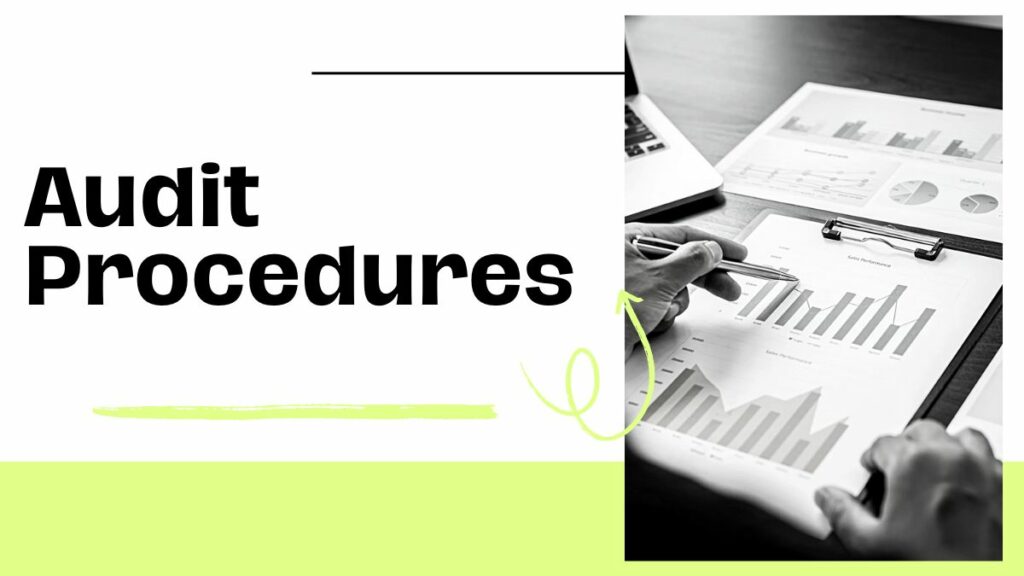An audit is a comprehensive and systematic examination of an entity's financial statements and related disclosures conducted by an independent auditor.
The primary objective of audit procedures is to provide reasonable assurance that the financial statements are prepared in accordance with applicable accounting standards and are free from material misstatements, whether due to fraud or error.
If you wish to become an auditor or a public accountant, enrol in Imarticus Learning’s US CPA course.
The Audit Process
Let us first discuss the different audit procedures that are a part of the audit process.
Planning the Audit
The audit process begins with careful planning. Auditors assess the entity’s business, financial reporting framework, and risks associated with the audit, which helps them determine the scope of the audit and the procedures that need to be performed.
Risk Assessment
Auditors identify and assess the risks of material misstatement in the financial statements. This involves understanding the entity's business environment, internal controls, and financial reporting processes. By assessing risks, auditors can allocate their resources effectively and focus on areas that are more likely to contain significant risks.
Evidence Gathering
Auditors gather evidence to support their conclusions about the financial statements. This evidence can be obtained through various procedures, including:
- Inspection: Examining documents, records, and assets.
- Observation: Observing the entity's activities and operations.
- Inquiry: Asking questions of management and other personnel.
- Confirmation: Obtaining written responses from third parties.
- Recalculation: Checking the mathematical accuracy of calculations.
- Reperformance: Performing procedures that were originally performed by the entity.
Evaluation of Evidence
Auditors evaluate the evidence they have gathered to determine whether it is sufficient and appropriate to support their conclusions. They consider the relevance, reliability, and sufficiency of the evidence.
Formulating Conclusions
Based on their evaluation of the evidence, auditors form conclusions about the fairness, completeness, and compliance of the financial statements. They assess whether the financial statements present a true and fair view of the entity's financial position, results of operations, and cash flows.
Issuing the Audit Report
Auditors communicate their auditor findings in an audit report. The report includes an opinion on the fairness of the financial statements, a description of the audit procedures performed and any significant findings.
Types of Audit Opinions
Auditors can issue one of three types of opinions:
- Unqualified Opinion: This is the most favourable opinion, indicating that the financial statements present a fair, complete, and compliant view.
- Qualified Opinion: This opinion indicates that there are specific matters that, although not pervasive, are material to the financial statements.
- Adverse Opinion: This opinion indicates that the financial statements are not presented fairly.
Disclaimer of Opinion: This opinion is issued when the auditor is unable to obtain sufficient appropriate evidence to form an opinion.
Factors Affecting Audit Conclusions
Several factors can affect an auditor’s conclusions. Let us discuss them in detail, as they are extremely important.
Materiality
Materiality refers to the significance of an error or omission in the financial statements. An error is considered material if it could reasonably influence the economic decisions of users relying on the financial statements. Auditors must use their professional judgments in determining the materiality threshold for each audit engagement, taking factors such as the nature of the entity, the industry it operates in, and the expectations of users into consideration.
Risk
Risk encompasses the likelihood and impact of material misstatements in the financial statements. Auditors assess the inherent risk associated with the entity's business and the control risk arising from the entity's internal control systems. By evaluating these risks, auditors can allocate their resources more effectively, focusing on areas more susceptible to material misstatements.
Evidence
The quality and quantity of evidence gathered during an audit are crucial in forming sound conclusions. Auditors obtain evidence through various procedures, such as inspection, observation, inquiry, confirmation, recalculation, and reperformance. The relevance, reliability, and sufficiency of the evidence are key considerations. Relevant evidence directly supports the assertions made in the financial statements, while reliable evidence is credible and trustworthy. Sufficient evidence is obtained in quantities that support the auditor's conclusions.
Accounting Standards
Accounting standards, the authoritative guidelines that govern the preparation and presentation of financial statements, provide a framework for auditors to assess the fairness and completeness of financial information. Auditors must ensure that the entity's financial statements comply with the applicable accounting standards, which can vary depending on the jurisdiction and the nature of the entity. Any deviations from accounting standards must be evaluated for their materiality and the appropriateness of the accounting treatment.
The Role of Technology in Auditing
Advancements in technology have significantly transformed the auditing profession, enhancing efficiency and effectiveness. Auditors now rely on a variety of software tools and techniques to streamline their work and improve the quality of their audits.
Data analytics is a powerful tool that enables auditors to analyse large volumes of data and identify patterns, anomalies, and potential risks. By using data analytics techniques, auditors can gain deeper insights into the financial statements and enhance their understanding of the entity's business operations.
Audit data analytics (ADA) is a specialised application of data analytics specifically for auditing purposes. ADA tools can help auditors identify potential fraud, assess the effectiveness of internal controls, and evaluate the accuracy of financial information.
Artificial intelligence (AI) is also being used in auditing, with the potential to automate certain tasks and improve the efficiency of the audit process. For example, AI-powered tools can be used to analyse vast amounts of data, identify trends, and detect anomalies.
Wrapping Up
The audit process is fundamentally a systematic examination of an entity's financial statements to assess their fairness, completeness, and compliance. After employing audit procedures to gather evidence and form conclusions about the financial statements, the type of opinion issued by the auditor depends on the quality of the evidence and the significance of any identified issues.
You can enrol in the Certified Public Accountant course by Imarticus Learning if you wish to become a US CPA.
Frequently Asked Questions
What is the purpose of an audit?
An audit is a systematic examination of an entity's financial statements to assess their fairness, completeness, and compliance with applicable accounting standards.
Who conducts audits?
Audits are typically conducted by independent auditors, such as certified public accountants (CPAs).
What are the different types of audit opinions?
Auditors can issue unqualified, qualified, adverse, or disclaimer of opinion based on their findings.
What are the key stages of an audit?
The key stages of an audit include planning, risk assessment, evidence gathering, evaluation of evidence, formulating conclusions, and issuing the audit report.
What factors can affect an auditor's conclusions?
Factors affecting audit conclusions include materiality, risk, evidence, and accounting standards.
What is the role of internal controls in an audit?
Internal controls are designed to prevent and detect errors and fraud. Auditors assess the effectiveness of internal controls to identify potential risks and evaluate the reliability of the financial statements.












